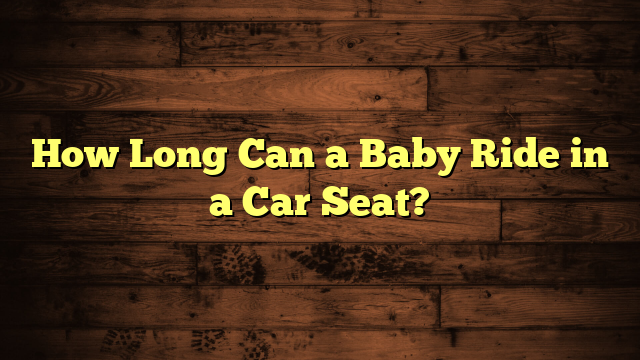When Can Babies Sit in Stroller Without Car Seat?
Just as every great hero must learn to stand on their own, your baby will reach a point where they can shift from a car seat to sitting in a stroller without that extra support. You might wonder when this significant moment occurs and what signs to look for to guarantee their readiness. Factors like their ability to sit independently and explore their surroundings play vital roles in this decision. As you consider these elements, you'll find there's much more to understand about this important milestone.
Key Takeaways
- Babies can typically transition to sitting in a stroller without a car seat between 6-9 months of age.
- Independent sitting ability and strong neck support are crucial signs of readiness for stroller use.
- Ensure the stroller has a secure harness system for safety when transitioning from a car seat.
- Monitor your baby's cues and comfort during initial stroller outings to facilitate adjustment.
- Introduce the stroller at home and start with short trips to help your baby acclimate.
Understanding Car Seat Guidelines
Safety is paramount when it comes to transporting your little one, and understanding car seat guidelines is vital. To guarantee you're following the latest car seat regulations, familiarize yourself with the age and weight recommendations for various types of seats, including rear-facing, forward-facing, and booster seats. Each category has specific safety standards designed to protect your child during travel.
For instance, the American Academy of Pediatrics suggests keeping your baby in a rear-facing car seat until they're at least two years old or until they reach the maximum height and weight limit specified by the manufacturer.
It's essential to regularly check the car seat's expiration date, as materials can degrade over time, impacting safety.
When you're choosing a car seat, look for one that meets or exceeds federal safety standards. This not only guarantees that you're providing the best protection for your child but also helps you feel more confident while driving.
Furthermore, always remember to install the car seat correctly, as improper installation can considerably reduce its effectiveness. By adhering to these guidelines, you can help keep your little one safe and secure on every journey.
Developmental Milestones for Sitting
As your baby grows, you'll notice exciting changes in their ability to sit up independently, which is a significant developmental milestone. This ability typically develops between four to seven months, marking an essential period for their physical development. During this time, your baby's trunk strength and sitting balance improve, enabling them to stabilize their body without support.
To better understand the stages of sitting development, consider the following table:
| Age Range | Milestone | Key Development Focus |
|---|---|---|
| 4-5 months | Begins to sit with support | Trunk strength |
| 5-6 months | Sits briefly without support | Sitting balance |
| 6-7 months | Sits independently for longer | Enhanced trunk strength |
As your little one reaches these milestones, you'll realize how essential trunk strength is for developing sitting balance. Encouraging tummy time and supported sitting can help facilitate this growth. Celebrate each achievement, as these moments lay the foundation for further physical skills, such as crawling and walking.
Recommended Age for Transition
By around six to nine months, many parents start considering the change from using a car seat in the stroller to sitting their baby directly in the stroller seat.
This shift depends on your child's development and readiness for change. At this age, babies typically have stronger neck and back muscles, which is essential for sitting upright safely.
It's important to assess age appropriateness before making this change. While some babies may be ready to sit in a stroller seat as early as six months, others mightn't be fully prepared until closer to nine months.
Look for signs of readiness, such as your baby's ability to sit up independently, maintain balance, and show interest in their surroundings.
Always prioritize safety during this change. Confirm the stroller has a secure harness system and supports your baby's posture.
If you're unsure about your baby's readiness, consult your pediatrician for personalized guidance.
Types of Strollers Available
When it comes to choosing a stroller, understanding the different types available can make a big difference for you and your baby.
You'll find standard strollers, which are great for everyday use, as well as car seat compatible options that make changes smoother.
Convertible strollers offer versatility, adapting as your child grows, so let's explore these choices to find what suits your needs best.
Standard Strollers Overview
Choosing the right stroller can make all the difference in your baby's comfort and your convenience. When exploring stroller types, standard strollers often stand out due to their versatility. These strollers are designed for everyday use, combining ease of maneuverability with essential features that cater to both you and your little one.
One of the primary stroller benefits is that standard strollers typically offer a comfortable seat, ample storage space, and a smooth ride for your baby. You'll find that they can accommodate a variety of activities, whether you're going for a leisurely stroll in the park or traversing busy city streets.
Many standard strollers come equipped with adjustable handles, making them suitable for parents of different heights. Additionally, these strollers often feature a reclining seat, allowing your baby to nap comfortably while you're on the go.
With different options available, you can choose a model that fits your lifestyle and your baby's needs. Remember, investing in a quality standard stroller not only enhances your outings but also provides a safe and cozy environment for your child.
Car Seat Compatible Strollers
For parents seeking convenience, car seat compatible strollers offer a seamless change between car and stroller. These strollers are designed to securely hold your infant car seat, making outings easier and ensuring your baby's stroller safety.
Here are four key benefits of car seat compatible strollers:
- Quick Change: You can easily move your baby from the car to the stroller without waking them up, thanks to car seat compatibility.
- Space-Saving Design: Many models allow you to attach the car seat directly onto the stroller frame, eliminating the need for bulky travel systems.
- Versatile Use: Whether you're running errands or enjoying a day at the park, these strollers adapt to your lifestyle, providing comfort for your little one.
- Enhanced Safety Features: Many car seat compatible strollers include safety harnesses and sturdy frames, prioritizing stroller safety while your child is on the go.
Investing in a car seat compatible stroller not only simplifies your outings but also provides peace of mind knowing you've chosen a safe option for your baby.
Choose wisely, and enjoy the convenience!
Convertible Stroller Options
Many parents find themselves exploring convertible stroller options after considering car seat compatible models. Convertible strollers come with a range of convertible features that enhance stroller versatility, making them a popular choice for growing families. These strollers can adapt to your child's needs as they grow, allowing you to use them from infancy through toddlerhood.
One of the main advantages of convertible strollers is their ability to shift between different modes. For instance, you can start with a car seat attachment, then switch to a bassinet, and eventually convert it to a traditional stroller seat. This flexibility means you won't need to invest in multiple strollers, saving both money and storage space.
Additionally, many convertible strollers offer adjustable handlebars and seating positions, ensuring comfort for both you and your child. Some models even allow for multiple seating configurations, so your little one can face you or explore the world ahead.
When choosing a convertible stroller, look for features that match your lifestyle, such as lightweight frames for easy transport or ample storage for all your essentials.
Safety Features to Consider
While considering when your baby can sit in a stroller without a car seat, it's vital to prioritize safety features.
A stroller's safety design directly impacts your child's well-being, so keep the following points in mind:
- Safety Harness: Verify the stroller has a five-point safety harness. This feature secures your baby snugly, preventing any chance of slipping out.
- Stroller Stability: Look for strollers with a wide base. A stable stroller minimizes the risk of tipping over, especially when maneuvering uneven surfaces.
- Braking System: Check for a reliable braking system. It should be easy to engage and disengage, providing peace of mind when you need to stop suddenly.
- Restraint System: Some strollers offer additional restraint features, like side impact protection. These can further enhance your baby's safety during rides.
Tips for a Smooth Transition
Shifting your baby from a car seat to a stroller seat can often feel overwhelming, but it doesn't have to be. Start by familiarizing your baby with the stroller at home. Let them explore it while it's stationary, so they can feel comfortable in their new seat. This simple change strategy helps ease any anxiety about the shift.
When you're ready to go out, make sure the stroller is adjusted for best stroller comfort. Use a padded seat insert if necessary, ensuring your baby is snug and secure.
Once you're out and about, keep the first few trips short. Gradually increase the duration as your baby gets used to the new arrangement, which can greatly help their adjustment.
Pay attention to your baby's cues—if they seem fussy, take a break or revert to the car seat for that outing.
Finally, be patient with the process; every baby adjusts differently. With positive reinforcement and a bit of practice, you'll both feel confident in this new stroller setup.
Signs Your Baby Is Ready
Recognizing when your baby is ready to sit in a stroller without a car seat is key to a smooth outing.
You'll want to be attentive to specific signs of baby readiness, guaranteeing both comfort and safety. Here are four important indicators:
- Head and Neck Control: Your baby should be able to hold their head up steadily without support. This strength is essential for safety.
- Sitting Up Independently: Look for your baby to sit with minimal assistance. When they can sit upright for a sustained period, they're closer to being stroller-ready.
- Weight Requirements: Check the stroller's guidelines; most recommend a minimum weight to guarantee proper support and safety.
- Interest in Surroundings: If your baby shows excitement in looking around and engaging with the world, it's a sign they're ready to experience outings in a stroller.
While these signs indicate baby readiness, always prioritize safety concerns.
Make certain your stroller has a secure harness system, and never leave your baby unattended.
Frequently Asked Questions
Can I Use a Stroller Without a Car Seat on Public Transport?
You can use a stroller without a car seat on public transport, but guarantee your child's safety. Always secure them properly in the stroller and be mindful of public transport rules regarding stroller safety.
Are There Strollers Specifically Designed for Infants?
Yes, there are strollers specifically designed for infants. These infant stroller types often include safety features like five-point harnesses and adjustable canopies, ensuring your little one stays secure and comfortable during outings.
What Should I Do if My Baby Dislikes the Stroller?
If your baby's resistance to the stroller feels like a tempest, explore stroller alternatives like baby carriers. Use calming techniques such as gentle rocking or soft music, transforming those challenging moments into delightful adventures together.
Can I Attach a Car Seat to Any Stroller Model?
You can't attach a car seat to just any stroller model. Always check stroller compatibility to guarantee car seat safety, as not all strollers support car seats, which could compromise your baby's security during outings.
How Do I Clean My Stroller After Using It With My Baby?
After a day in the park, you'll want your stroller looking fresh. Use these stroller maintenance tips: wipe the frame with a damp cloth, vacuum the seat, and try these cleaning hacks for stubborn stains!
Conclusion
As your baby blossoms like a flower, reaching those essential milestones, it's time to embrace the world of strollers without the car seat. By observing their readiness—sitting independently and exploring their surroundings—you're not just moving them to a new seat; you're opening the door to adventure. With safety features and gradual outings, you'll guarantee a smooth journey. Trust your instincts, and watch your little one thrive in this new chapter of exploration and joy.
- Can I Get in a Taxi Without a Car Seat? - January 26, 2025
- Can I Get Chlamydia From a Toilet Seat? - January 26, 2025
- Can I Get an Uber With a Car Seat? - January 26, 2025






